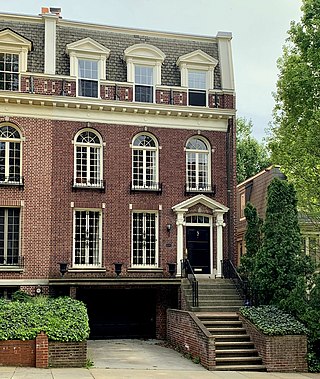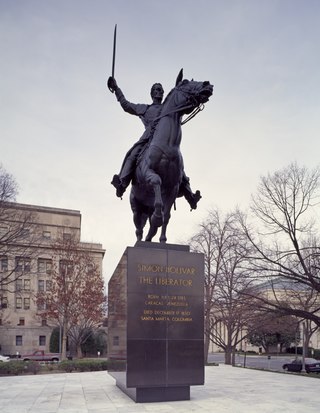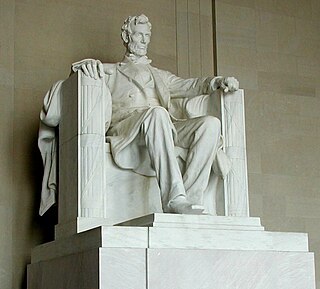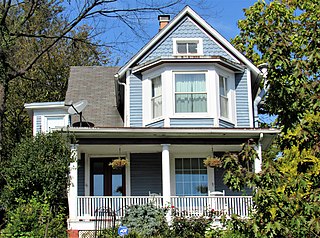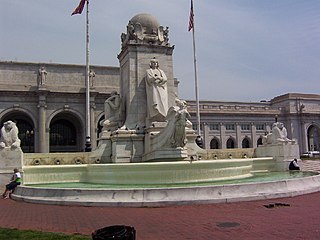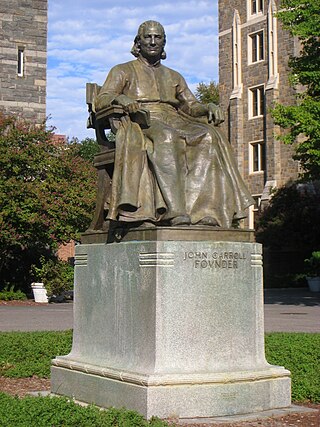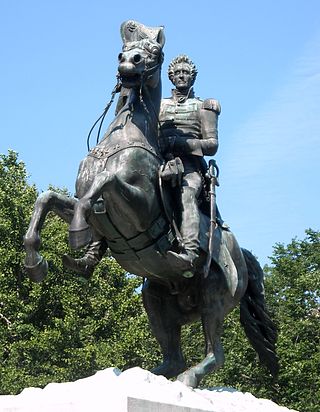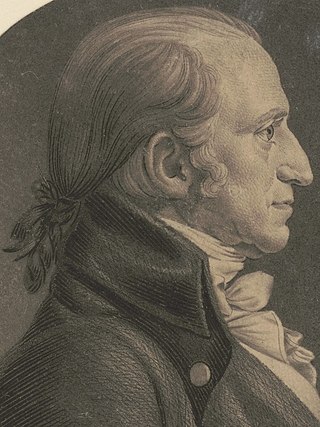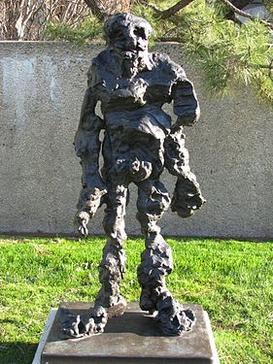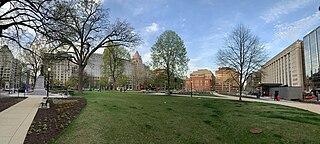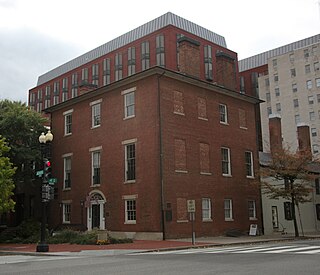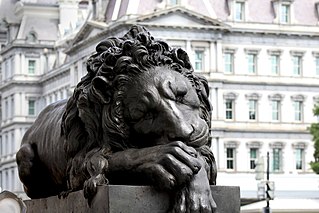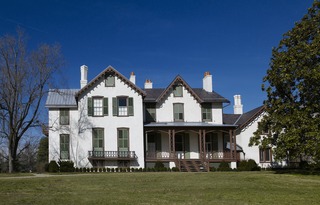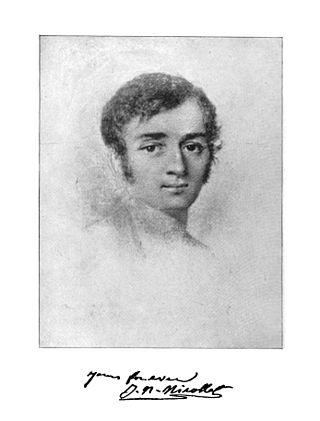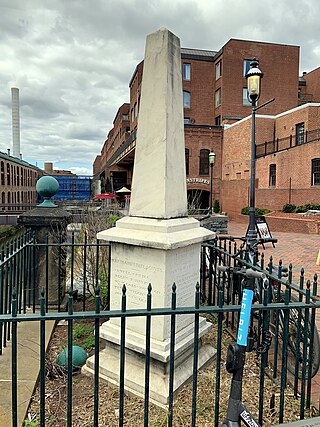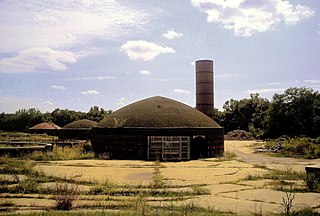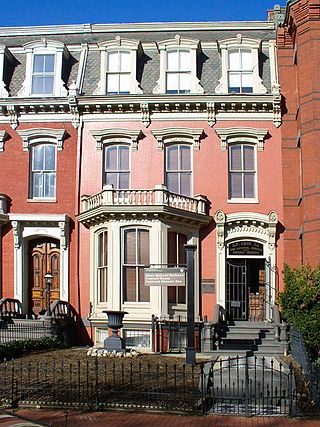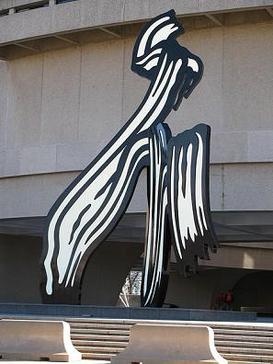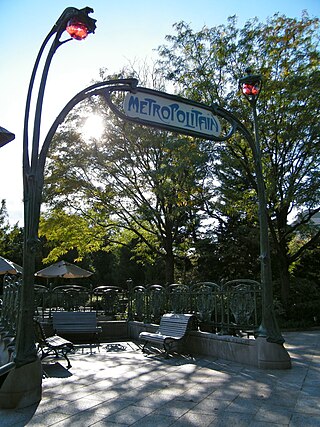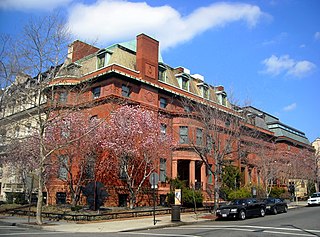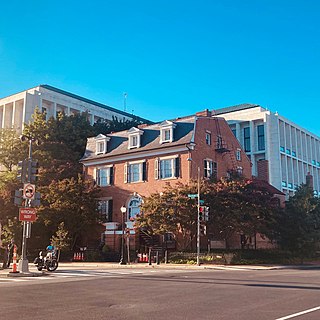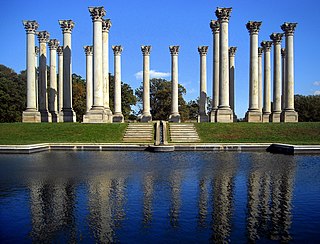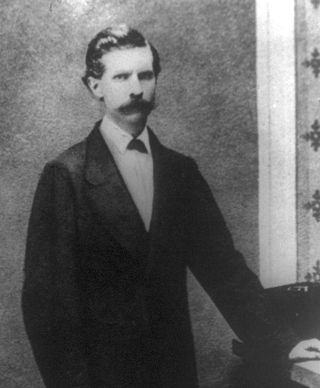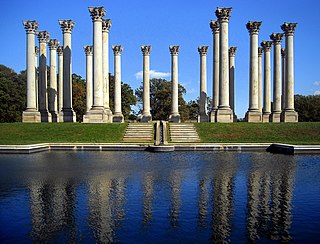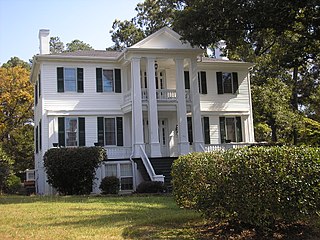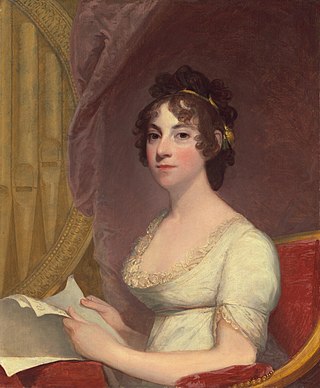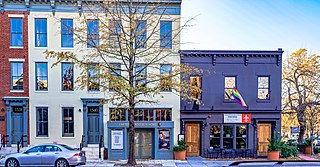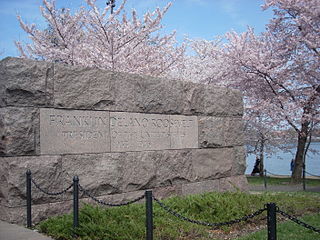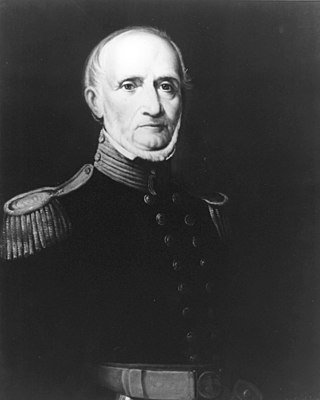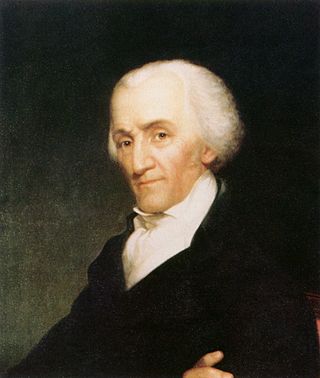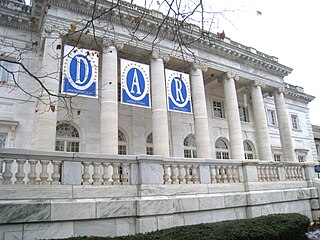100 Sights in Washington, United States (with Map and Images)
Legend
Explore interesting sights in Washington, United States. Click on a marker on the map to view details about it. Underneath is an overview of the sights with images. A total of 100 sights are available in Washington, United States.
Sightseeing Tours in Washington1. Leonard Matlovich

Technical Sergeant Leonard Phillip Matlovich was an American Vietnam War veteran, race relations instructor, and recipient of the Purple Heart and the Bronze Star. He was the first gay service member to purposely out himself to the military to fight their ban on gays, and perhaps the best-known openly gay man in the United States of America in the 1970s next to Harvey Milk. His fight to stay in the United States Air Force after coming out of the closet became a cause célèbre around which the gay community rallied. His case resulted in articles in newspapers and magazines throughout the country, numerous television interviews, and a television movie on NBC. His photograph appeared on the cover of the September 8, 1975, issue of Time magazine, making him a symbol for thousands of gay and lesbian servicemembers and gay people generally. Matlovich was the first named openly gay person to appear on the cover of a U.S. newsmagazine. According to author Randy Shilts, "It marked the first time the young gay movement had made the cover of a major newsweekly. To a movement still struggling for legitimacy, the event was a major turning point."
2. Seward Square
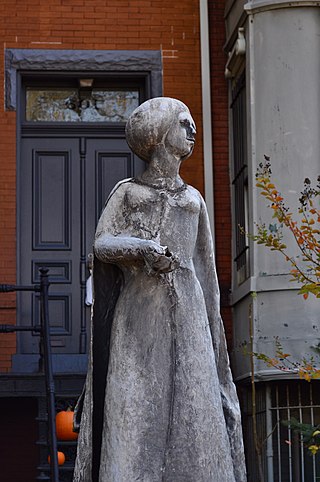
Seward Square is a square and park maintained by the National Park Service located at the intersection of Pennsylvania Avenue and North Carolina Avenue in the Capitol Hill neighborhood of Southeast Washington, D.C. The square is bounded by 4th Street to the west and 6th Street to the east. North and south of the park are the respective westbound and eastbound lanes of Seward Square, SE. Because Pennsylvania and North Carolina Avenues intersect in the middle of the square, it divides the square into four unique smaller parks. The park is named after William Henry Seward, the United States Secretary of State under Presidents Abraham Lincoln and Andrew Johnson. Seward is noted for his part in the American purchase of Alaska from the Russian Empire in 1867. The purchase was ridiculed at the time and was colloquially known as "Seward's Folly". There is no statue of William Seward on the site of the park, however there is a statue of his adopted daughter, Olive Risley Seward located at a private residence at the corner of 6th Street and North Carolina Avenue, SE. The statue was sculpted in 1971 by John Cavanaugh.
3. U.S. Bureau of Engraving and Printing
The Bureau of Engraving and Printing (BEP) is a government agency within the United States Department of the Treasury that designs and produces a variety of security products for the United States government, most notable of which is Federal Reserve Notes for the Federal Reserve, the nation's central bank. In addition to paper currency, the BEP produces Treasury securities; military commissions and award certificates; invitations and admission cards; and many different types of identification cards, forms, and other special security documents for a variety of government agencies. The BEP is one of two U.S. agencies in currency production in the case of printing paper currency; the other is the United States Mint, which mints coinage. With production facilities in Washington, D.C., and Fort Worth, Texas, the Bureau of Engraving and Printing is the largest producer of government security documents in the United States.
4. George Gordon Meade Memorial
The George Gordon Meade Memorial, also known as the Meade Memorial or Major General George Gordon Meade, is a public artwork in Washington, D.C. honoring George Meade, a career military officer from Pennsylvania who is best known for defeating General Robert E. Lee at the Battle of Gettysburg. The monument is sited on the 300 block of Pennsylvania Avenue NW in front of the E. Barrett Prettyman United States Courthouse. It was originally located at Union Square, but was removed and placed in storage for fourteen years before being installed at its current location. The statue was sculpted by Charles Grafly, an educator and founder of the National Sculpture Society, and was a gift from the state of Pennsylvania. Prominent attendees at the dedication ceremony in 1927 included President Calvin Coolidge, Governor John Stuchell Fisher, Secretary of the Treasury Andrew W. Mellon, and Senator Simeon D. Fess.
5. John C. Calhoun
John Caldwell Calhoun was an American statesman and political theorist who served as the seventh vice president of the United States from 1825 to 1832. Born in South Carolina, he adamantly defended American slavery and sought to protect the interests of white Southerners. Calhoun began his political career as a nationalist, modernizer and proponent of a strong federal government and protective tariffs. In the late 1820s, his views changed radically, and he became a leading proponent of states' rights, limited government, nullification, and opposition to high tariffs. Calhoun saw Northern acceptance of those policies as a condition of the South's remaining in the Union. His beliefs heavily influenced the South's secession from the Union in 1860 and 1861. He was the first of two vice presidents to resign from the position, the second being Spiro Agnew, who resigned in 1973.
6. Major General John A. Logan Monument
Major General John A. Logan, also known as the General John A. Logan Monument and Logan Circle Monument, is an equestrian statue in Washington, D.C., that honors politician and Civil War general John A. Logan. The monument is sited in the center of Logan Circle, a traffic circle and public park in the Logan Circle neighborhood. The statue was sculpted by artist Franklin Simmons, whose other prominent works include the Peace Monument and statues in the National Statuary Hall Collection. The architect of the statue base was Richard Morris Hunt, designer of prominent buildings including the Metropolitan Museum of Art in New York City and The Breakers in Newport, Rhode Island. Prominent attendees at the dedication ceremony in 1901 included President William McKinley, members of his cabinet, Senator Chauncey Depew, Senator Shelby Moore Cullom, and General Grenville M. Dodge.
7. Number One Observatory Circle
Number One Observatory Circle, often referred to as the Naval Observatory, is the official residence of the vice president of the United States. Located on the northeast grounds of the U.S. Naval Observatory in Washington, D.C., the house was built in 1893 for the observatory superintendent. The chief of naval operations (CNO) liked the house so much that in 1923 he took over the house for himself. It remained the residence of the CNO until 1974, when Congress determined that it would be easier and less expensive to provide security in a government-provided residence, and authorized its transformation to an official residence for the vice president, though a temporary one. It is still the "official temporary residence of the vice president of the United States" by law. The 1974 congressional authorization covered the cost of refurbishment and furnishing the house.
8. Brigadier General Kosciuszko
Brigadier General Thaddeus Kościuszko is a bronze statue honoring Polish military figure and engineer Tadeusz Kościuszko. The sculpture was dedicated in 1910, the third of four statues in Lafayette Square, Washington, D.C., to honor foreign-born heroes of the American Revolutionary War. Born in the Polish–Lithuanian Commonwealth in 1746, Kościuszko later received education at a Jesuit school before attending the Corps of Cadets in Warsaw. He later traveled to France where he studied in military academy libraries and adopted views of human liberty during the Age of Enlightenment. He moved to the Thirteen Colonies in 1776, where the war with the Kingdom of Great Britain had already begun. Kościuszko served as an engineer in the Continental Army, earning the praise of his superiors, including General George Washington.
Wikipedia: Statue of Tadeusz Kościuszko (Washington, D.C.) (EN)
9. Martin Luther Statue
The Luther Monument is a public artwork located in front of Luther Place Memorial Church in Washington, D.C., United States. The monument to Martin Luther, the theologian and Protestant Reformer, is a bronze, full-length portrait. It is a copy of the statue created by Ernst Friedrich August Rietschel as part of the 1868 Luther Monument in Worms, Germany. The version in Washington, D.C., inspired the installation of many other castings across the U.S. The statue is a contributing property to the Luther Place Memorial Church's listing on the National Register of Historic Places (NRHP) and District of Columbia Inventory of Historic Sites (DCIHS). It is also a contributing property to the Greater Fourteenth Street Historic District, which is also listed on the NRHP and DCIHS.
10. John Quincy Adams
John Quincy Adams was an American statesman, politician, diplomat, lawyer, and diarist who served as the sixth president of the United States, from 1825 to 1829. He previously served as the eighth United States secretary of state from 1817 to 1825. During his long diplomatic and political career, Adams served as an ambassador and also as a member of the United States Congress representing Massachusetts in both chambers. He was the eldest son of John Adams, who served as the second president of the United States from 1797 to 1801, and First Lady Abigail Adams. Initially a Federalist like his father, he won election to the presidency as a member of the Democratic-Republican Party, and later, in the mid-1830s, became affiliated with the Whig Party.
11. Pennsylvania Trolley Museum
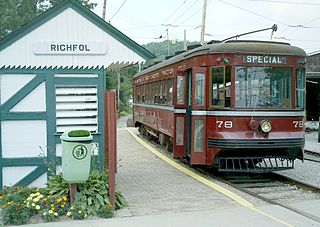
The Pennsylvania Trolley Museum is a museum in Washington, Pennsylvania, dedicated to the operation and preservation of streetcars and trolleys. The museum primarily contains historic trolleys from Pennsylvania, but its collection includes examples from nearby Toledo, New Orleans, and even an open-sided car from Brazil. Many have been painstakingly restored to operating condition. Other unique cars either awaiting restoration or that are incompatible with the 5' 2-1/2" Pennsylvania trolley gauge track are on display in a massive trolley display building. Notable examples of static display include a J.G. Brill “Brilliner” car, locomotives, and a horse car from the early days of Pittsburgh’s public transit systems.
12. Sheridan Circle
Sheridan Circle is a traffic circle and park in the Sheridan-Kalorama neighborhood of Washington, D.C. The traffic circle, one of two in the neighborhood, is the intersection of 23rd Street NW, Massachusetts Avenue NW, and R Street NW. The buildings along this stretch of Massachusetts Avenue NW are part of Embassy Row, which runs from Scott Circle to Observatory Circle. Sheridan Circle is a contributing property to the Massachusetts Avenue Historic District and the Sheridan-Kalorama Historic District, both listed on the National Register of Historic Places (NRHP). In addition, the equestrian statue of General Philip Sheridan is 1 of 18 Civil War Monuments in Washington, D.C., that were collectively listed on the NRHP.
13. Edmund Burke Statue
Edmund Burke is a bronze, full-length statue of British statesman, author, orator, political theorist, and philosopher Edmund Burke by British artist James Havard Thomas. The original statue is in Bristol, England, with a second cast in Washington, D.C. The statue in Washington, D.C., stands in Burke Park, at the intersection of 11th Street, L Street, and Massachusetts Avenue NW, on the southern border of the Shaw neighborhood. The statue was a gift from the Charles Wakefield, 1st Viscount Wakefield, on behalf of the Sulgrave Institution, an organization that wanted to celebrate United Kingdom–United States relations. One way the group did this was by exchanging statues and busts between the two countries.
14. Peter Muhlenberg Memorial
The Peter Muhlenberg Memorial is a public monument in Washington, D.C. It honors John Peter Gabriel Muhlenberg, a Lutheran minister, Continental Army general, Federalist Era American politician, and member of the prominent Muhlenberg family. The memorial is located in a one-acre park bounded by Connecticut Avenue, Ellicott Street, and 36th Street NW on the eastern edge of Washington's Wakefield neighborhood. Designed by architect John Harbeson, it features at its center a bronze bust of Muhlenberg, sculpted by his descendant, Caroline M. Hufford. Completed in 1980, 52 years after its construction was authorized by Congress, attendees at the dedication ceremony included West German ambassador Peter Hermes.
15. Samuel Gompers Memorial Park
The Samuel Gompers Memorial is a bronze collection of statues in Washington, D.C., sited on a triangular park at the intersection of 11th Street, Massachusetts Avenue, and N Street NW. Gompers was an English-born American who grew up working in cigar factories, where he witnessed the long hours and dangerous conditions people experienced in factory jobs. He helped with growing the Cigar Makers' International Union, and a few years later, founded the American Federation of Labor (AFL). The number of members rose from 50,000 to 3,000,000 during his time as president of the union. He was not only successful in expanding the power of the labor movement, but also increased its prestige.
16. Admiral David G Farragut
Admiral David G. Farragut is a statue in Washington, D.C., honoring David Farragut, a career military officer who served as the first admiral in the United States Navy. The monument is sited in the center of Farragut Square, a city square in downtown Washington, D.C. The statue was sculpted by female artist Vinnie Ream, whose best-known works include a statue of Abraham Lincoln and several statues in the National Statuary Hall Collection. The monument was dedicated in 1881 in an extravagant ceremony attended by President James A. Garfield, members of his cabinet, and thousands of spectators. It was the first monument erected in Washington, D.C., in honor of a naval war hero.
17. DAR Constitution Hall
DAR Constitution Hall is a concert hall located at 1776 D Street NW, near the White House in Washington, D.C. It was built in 1929 by the Daughters of the American Revolution to house its annual convention when membership delegations outgrew Memorial Continental Hall. Later, the two buildings were connected by a third structure housing the DAR Museum, administrative offices, and genealogical library. DAR Constitution Hall is still owned and operated by the National Society of Daughters of the American Revolution. It was designated a National Historic Landmark in 1985. It has been a major cultural center of the city since its construction, and houses its largest auditorium.
18. Lieutenant General Winfield Brevet Scott Statue
Brevet Lt. General Winfield Scott is an equestrian statue in Washington, D.C., that honors career military officer Winfield Scott. The monument stands in the center of Scott Circle, a traffic circle and small park at the convergence of 16th Street, Massachusetts Avenue and Rhode Island Avenue NW. The statue was sculpted by Henry Kirke Brown, whose best-known works include statues of George Washington in New York and Nathanael Greene in Washington, D.C. It was the first of many sculptures honoring Civil War generals that were installed in Washington, D.C.'s traffic circles and squares and was the second statue in the city to honor Scott.
19. Laogai Museum
The Laogai Museum is a museum in Dupont Circle, Washington, D.C., United States, which showcases human rights in the People's Republic of China, focusing particularly on Láogǎi, the Chinese prison system of "Reform through Labor". The creation of the museum was spearheaded by Harry Wu, a well-known Chinese dissident who himself served 19 years in laogai prisons; it was supported by the Yahoo! Human Rights Fund. It opened to the public on 12 November 2008, and Wu's non-profit research organization calls it the first museum in the United States to directly address the issue of human rights in China. It is now permanently closed.
20. Dumbarton Oaks
Dumbarton Oaks, formally the Dumbarton Oaks Research Library and Collection, is a historic estate in the Georgetown neighborhood of Washington, D.C. It was the residence and gardens of wealthy U.S. diplomat Robert Woods Bliss and his wife Mildred Barnes Bliss. The estate was founded by the Bliss couple, who gave the home and gardens to Harvard University in 1940. In 1944, it was the site of the Dumbarton Oaks Conference to plan for the post-WWII United Nations. The part of the landscaped portion of the estate that was designed as an enhanced "natural" area, was given to the National Park Service and is now Dumbarton Oaks Park.
21. National Museum Of American Jewish Military History
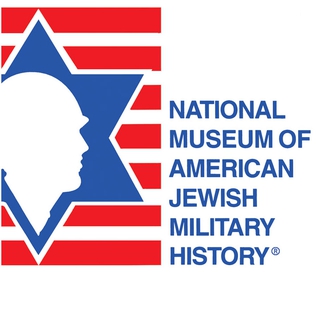
The National Museum of American Jewish Military History (NMAJMH) was founded September 2, 1958, in Washington, D.C., to document and preserve "the contributions of Jewish Americans to the peace and freedom of the United States...[and to educate] the public concerning the courage, heroism and sacrifices made by Jewish Americans who served in the armed forces." It operates under the auspices of the Jewish War Veterans of the United States of America (JWV), National Memorial, Inc. (NMI), and is located at 1811 R Street NW, Washington, D.C., in the Dupont Circle area, in the same building that houses the JWV National Headquarters.
Wikipedia: National Museum of American Jewish Military History (EN), Website
22. Lieutenant General George Washington Statue
Lieutenant General George Washington is an 1860 equestrian statue of George Washington, at Washington Circle, at the edge of the George Washington University's campus, in Washington, D.C. The statue was sculpted by Clark Mills, who also created the equestrian statue of Andrew Jackson in front of the White House. The traffic circle where the statue is located was one of the original city designs by Pierre Charles L'Enfant. The statue and surrounding park are in the Foggy Bottom neighborhood at the intersection of 23rd Street, New Hampshire Avenue, and Pennsylvania Avenue NW. The K Street NW underpass runs beneath the circle.
Wikipedia: Lieutenant General George Washington (statue) (EN)
23. Arlington Memorial Bridge
The Arlington Memorial Bridge, often shortened to Memorial Bridge, is a Neoclassical masonry, steel, and stone arch bridge with a central bascule that crosses the Potomac River in Washington, D.C., the capital of the United States. First proposed in 1886, the bridge went unbuilt for decades thanks to political quarrels over whether the bridge should be a memorial, and to whom or what. Traffic problems associated with the dedication of the Tomb of the Unknown Soldier in November 1921 and the desire to build a bridge in time for the bicentennial of the birth of George Washington led to its construction in 1932.
24. Daniel Webster Memorial
The Daniel Webster Memorial is a monument in Washington, D.C., honoring U.S. statesman and lawyer Daniel Webster. It is located near Webster's former house, beside Scott Circle, at the intersection of Massachusetts Avenue, N Street, and Rhode Island Avenue NW. The person who commissioned the memorial was Stilson Hutchins, founder of The Washington Post, who greatly admired Webster. Congress approved the memorial in 1898 and the dedication ceremony took place in January 1900. Amongst the attendees at the ceremony were President William McKinley and his cabinet, members of Congress, and Supreme Court justices.
25. Guglielmo Marconi Statue
The Guglielmo Marconi Memorial is a public artwork by Attilio Piccirilli, located at the intersection of 16th and Lamont Streets NW in the Mount Pleasant neighborhood of Washington, D.C. It stands as a tribute to Italian inventor Guglielmo Marconi, whose work with telegraphy and radio waves led to the creation and popularity of the radio. It was paid for by public subscription and erected in 1941. The artwork was listed on both the District of Columbia Inventory of Historic Sites and the National Register of Historic Places in 2007. It is a contributing property to the Mount Pleasant Historic District.
26. Major General George Thomas Statue
Major General George Henry Thomas, also known as the Thomas Circle Monument, is an equestrian sculpture in Washington, D.C. that honors Civil War general George Henry Thomas. The monument is located in the center of Thomas Circle, on the border of the downtown and Logan Circle neighborhoods. It was sculpted by John Quincy Adams Ward, best known for his work on the statue of George Washington in Wall Street, Manhattan. Attendees at the dedication in 1879 included President Rutherford B. Hayes, Generals Irvin McDowell, Philip Sheridan, and William Tecumseh Sherman, senators and thousands of soldiers.
27. Georgetown University Astronomical Observatory
The Georgetown University Astronomical Observatory was founded in 1841 by Father James Curley of the Department of Physics at Georgetown College. Father Curley chose a site on the college grounds, planned the building, and supervised its construction to its completion in 1844. Costs were initially paid by Rev. Thomas Meredith Jenkins, S.J., and Rev. Charles H. Stonestreet, S.J., who were Georgetown professors at the time. The observatory was used in 1846 to determine the latitude and longitude of Washington, D.C., which Curley determined to be latitude 38°54′26N and longitude 5h8m18.29s.
Wikipedia: Georgetown University Astronomical Observatory (EN)
28. American Fazl Mosque
The Fazl Mosque in Washington, D.C. was established by the Ahmadiyya Muslim Community in 1950 and is the first mosque in the U.S. capital of Washington, D.C. Its full title is the American Fazl Mosque, which helps to distinguish it from its sister mosque, the Fazl Mosque, London, both of which were the first mosques in the capitals of the U.S. and the U.K., respectively. Located a few minutes from the White House, and neighboring several embassies, Fazl Mosque opened seven years prior to the Islamic Center of Washington and is the longest serving mosque in the nation's capital.
29. All Hallows Guild Traveling Carousel
The All Hallows Guild Carousel, or simply the Traveling Carousel, is a historic carousel housed at the National Cathedral in Washington, D.C. since 1963. Previously, it operated as a "county fair" carousel under Clifford Sandretzky as part of a traveling carnival based in the northern Virginia area. The carousel, constructed primarily of wood, is a rare piece believed to have been built by the Merry-Go-Round Company of Cincinnati in the 1890s. It features a unique caliola with brass pipes that was built by the Rudolph Wurlitzer Company of North Tonawanda, New York in 1937.
30. Pope John Paul II National Shrine
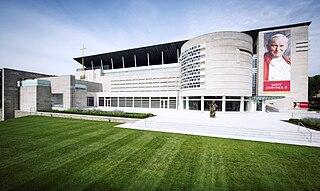
The Saint John Paul II National Shrine is a national shrine in Washington, D.C., sponsored by the Knights of Columbus. It is a place of prayer for Catholics and welcomes people of all faiths. The Shrine houses a permanent exhibit called A Gift of Love: the Life of Saint John Paul II and is home to the Redemptor Hominis Church and Luminous Mysteries Chapel, both of which are decorated with mosaic art designed by Rev. Marko Rupnik, S.J. Mass is celebrated daily in the Redemptor Hominis Church, and the Luminous Mysteries Chapel houses a first-class relic of John Paul II.
31. Henry Clay
Henry Clay Sr. was an American lawyer and statesman who represented Kentucky in both the U.S. Senate and House of Representatives. He was the seventh House speaker as well as the ninth secretary of state. He unsuccessfully ran for president in the 1824, 1832, and 1844 elections. He helped found both the National Republican Party and the Whig Party. For his role in defusing sectional crises, he earned the appellation of the "Great Compromiser" and was part of the "Great Triumvirate" of Congressmen, alongside fellow Whig Daniel Webster and Democrat John C. Calhoun.
32. Hirshhorn Sculpture Garden
The Hirshhorn Museum and Sculpture Garden is an art museum beside the National Mall in Washington, D.C., United States. The museum was initially endowed during the 1960s with the permanent art collection of Joseph H. Hirshhorn. It was designed by architect Gordon Bunshaft and is part of the Smithsonian Institution. It was conceived as the United States' museum of contemporary and modern art and currently focuses its collection-building and exhibition-planning mainly on the post–World War II period, with particular emphasis on art made during the last 50 years.
33. Grant Road Historic District
The Grant Road Historic District is located in the Tenleytown neighborhood of Washington, D.C. The two-block historic district is what remains of a former settlement in rural Washington County in the District of Columbia. It includes 13 contributing buildings and the road itself, a narrow remnant of a country road that was used by soldiers in the Civil War. Following the war, the road was named after Civil War general and President Ulysses S. Grant. Grant Road developed into a residential street lined with mostly small, two-story homes for working-class people.
34. Dumbarton Oaks Park
The Dumbarton Oaks Park is a public park, located in the 3100 block of R Street, Northwest, Washington, D.C., in the Georgetown neighborhood. Access is via Lovers' Lane from R Street, east of 32nd Street. It is located near Dumbarton Oaks, Montrose Park, and Oak Hill Cemetery. It is located in the Georgetown Historic District. Now part of Rock Creek Park, it originally belonged to the Dumbarton Oaks estate. In the 2020's the National Park Service worked with the estate to restore and preserve the landscape architecture of Beatrix Farrand in the park.
35. Major General von Steuben
Major General Friedrich Wilhelm von Steuben is a bronze statue of Friedrich Wilhelm von Steuben, a Prussian soldier who assisted the Thirteen Colonies during the American Revolutionary War. Steuben had fought in previous wars, earning promotions until he assisted in the courts of Frederick the Great and later Josef Friedrich Wilhelm, Prince of Hohenzollern-Hechingen. After meeting with Benjamin Franklin, and fearing for his safety in Europe after alleged homosexual behavior, Steuben and his associates arrived to help the Continental Army.
36. Bearing Witness
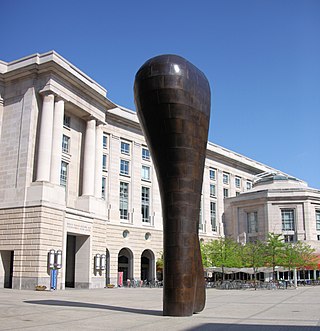
Bearing Witness is an outdoor 1997 sculpture by Martin Puryear, installed outside the Ronald Reagan Building and International Trade Center in Washington, D.C., in the United States. Twenty plus years after its construction the sculpture follows the characteristic style of Puryear and remains standing with minimal maintenance twenty plus years after its construction. The meaning of the sculpture is left up to interpretation, although many observers read into the inspirations Puryear may have had when designing the work.
37. Art Museum of the Americas
Art Museum of the Americas (AMA), located in Washington, D.C., is the first art museum in the United States primarily devoted to exhibiting works of modern and contemporary art from Latin America and the Caribbean. The museum was formally established in 1976 by the Organization of American States (OAS) as the Museum of Modern Art of Latin America. Artists represented in the AMA's permanent collection include Carlos Cruz-Diez, Candido Portinari, Pedro Figari, Fernando de Szyszlo, Amelia Peláez, and Alejandro Obregón.
38. Statue of Winston Churchill
The statue of Winston Churchill on Embassy Row in Washington, D.C., is a bronze memorial in honor of British Prime Minister Winston Churchill. The plan to erect a memorial began after Churchill's 89th birthday. The English-Speaking Union (ESU) was the driving force behind the fundraising and installation of the statue. Eight sculptors submitted designs for the statue and the person chosen was William M. McVey. The architectural firms for the site were George F. Dalton and Associates and Fred Toguchi Associates.
Wikipedia: Statue of Winston Churchill (Washington, D.C.) (EN)
39. Andrew Mellon Memorial Fountain
The Andrew W. Mellon Memorial Fountain is a bronze fountain sculpture by Sidney Waugh as a memorial to Andrew W. Mellon. It is located at the eastern tip of the Federal Triangle within the intersection of Pennsylvania Avenue, Constitution Avenue, and 6th Street NW in Washington D.C., United States. The fountain is across Constitution Avenue from the West Building of the National Gallery of Art. The Department of the Interior maintains the fountain, which President Harry S. Truman dedicated on May 9, 1952.
40. Dupont Circle
Dupont Circle is a historic roundabout park and neighborhood of Washington, D.C., located in Northwest D.C. The Dupont Circle neighborhood is bounded approximately by 16th Street NW to the east, 22nd Street NW to the west, M Street NW to the south, and Florida Avenue NW to the north. Much of the neighborhood is listed on the National Register of Historic Places. However, the local government Advisory Neighborhood Commission and the Dupont Circle Historic District have slightly different boundaries.
41. Old Greyhound Bus Terminal
The Old Greyhound Terminal was a bus terminal serving Greyhound Lines located at 1100 New York Avenue NW in Northwest, Washington, D.C. in the United States operating from 1940 to the 1980s. It was used extensively during World War II to transport servicemen, and played a minor role in the Civil Rights Movement. It was saved through the intervention of preservationists. Most of the building was incorporated in the new 1100 New York Avenue high-rise office building when it was built in 1991.
42. Adams Memorial
The Adams Memorial is a grave marker for Marian Hooper Adams and Henry Adams located in Section E of Rock Creek Cemetery, Washington, D.C. The memorial features a cast bronze allegorical sculpture by Augustus Saint-Gaudens. Saint-Gaudens' shrouded-figure statue is seated against a granite block which takes up one side of a hexagonal plaza, designed by architect Stanford White. Across from the statue is a stone bench for visitors. The whole is sheltered by a close screen of dense conifers.
43. Major General James B. McPherson
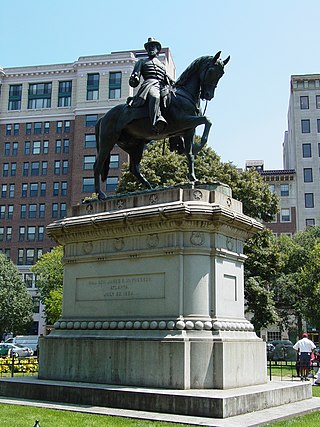
Major General James B. McPherson is a public artwork by American artist Louis Rebisso, located at McPherson Square in Washington, D.C., United States. Major General James B. McPherson was originally surveyed as part of the Smithsonian's Save Outdoor Sculpture! survey in 1993. The monument is a bronze equestrian statue of Civil War hero James B. McPherson. The statue is a contributing monument to the Civil War Monuments in Washington, DC, of the National Register of Historic Places.
44. Meridian Hill/Malcolm X Park
Meridian Hill Park is an urban park in Washington, D.C., located in the Meridian Hill neighborhood that straddles the border between Adams Morgan and Columbia Heights, in Northwest D.C. The park was built between 1912-40 and covers 12-acre (49,000 m2). Meridian Hill Park is bordered by 15th, 16th, W, and Euclid streets NW, and sits on a prominent hill 1.5 miles (2.4 km) directly north of the White House. Since 1969, the name Malcolm X Park is used by some in honor of Malcolm X.
45. Fort Bunker Hill Park
Fort Bunker Hill was one of seven temporary earthwork forts part of the Civil War Defenses of Washington, D.C., during the Civil War built in the Northeast quadrant of the city at the beginning of the Civil War by the Union Army to protect the city from the Confederate Army. From west to east, the forts were: Fort Slocum, Fort Totten, Fort Slemmer, Fort Bunker Hill, Fort Saratoga, Fort Thayer and Fort Lincoln. Unlike other forts, today very little remains of the structure.
46. Taras Shevchenko Statue
The Taras Shevchenko Memorial is a bronze statue and stone relief-adorned wall located on the 2200 block of P Street NW in the Dupont Circle neighborhood of Washington, D.C., United States. It is one of many monuments in Washington, D.C. that honor foreign heroes who symbolize freedom in their native countries. Sculpted by Leo Mol, the memorial honors Taras Shevchenko (1814–1861), a Ukrainian poet and artist who influenced the development of modern Ukrainian literature.
47. Emancipation Hall
The United States Capitol Visitor Center (CVC) is a large underground addition to the United States Capitol complex which serves as a gathering point for up to 4,000 tourists and an expansion space for the U.S. Congress. It is located below the East Front of the Capitol and its plaza, between the Capitol building and 1st Street East. The complex contains 580,000 square feet (54,000 m2) of space below ground on three floors. The overall project's budget was $621 million.
48. Alexander Dallas Bache
The Alexander Dallas Bache Monument is the tomb of Alexander Dallas Bache, a noted American scientist and surveyor. Bache died in Newport, Rhode Island in 1867 and was transported to Washington, DC's Congressional Cemetery for burial. American architect Henry Hobson Richardson was commissioned to build a tomb in 1868. The tomb is one of only three examples of a monument designed by Richardson and a rare example of a Richardson structure lacking Romanesque design points.
49. Bryce Park
Bryce Park is an urban triangle park located in the District of Columbia neighborhood of Cathedral Heights; formed by the intersection of Massachusetts Ave., Wisconsin Ave. and Garfield St., NW. This 0.59 acre site is administered by the National Park Service as a part of Rock Creek Park, but is not contiguous with that park. Situated across Massachusetts Ave, NW from the Washington National Cathedral, the park provides pathways and benches for area pedestrians.
50. Capitol Hill
Capitol Hill is a neighborhood in Washington, D.C., located in both Northeast D.C. and Southeast D.C.. Dominated by the United States Capitol, which sits on the highest point of Capitol Hill, it is one of the oldest historic districts in Washington. Home to around 35,000 people in just under 2 square miles (5 km2), Capitol Hill is also one of the most densely populated neighborhoods. The name "Capitol Hill" is frequently used as a metonym for the U.S. Congress.
51. Alexander Pushkin
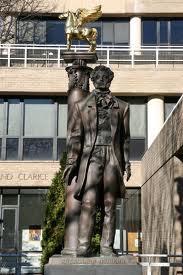
Alexander Pushkin is a bronze statue by Alexander Bourganov. It is located at the corner of 22nd Street and H Street, N.W. Washington, D.C., on the campus of George Washington University. It was erected as part of a cultural exchange between the cities of Moscow and Washington; in 2009, a statue of the American poet Walt Whitman was erected in Moscow. Pushkin's statue is said to be the first monument commemorating a Russian literary figure in the United States.
52. Anderson House
Anderson House, also known as Larz Anderson House, is a Gilded Age mansion located at 2118 Massachusetts Avenue, NW, on Embassy Row in the Dupont Circle neighborhood of Washington, D.C. It now houses the Society of the Cincinnati's international headquarters and a research library on 17th- and 18th-century military and naval history and the art of war. It is also open to the public as a historic house museum about life in Washington in the early 20th century.
53. The Inn at Little Washington
The Inn at Little Washington is a luxury country inn and restaurant located in Washington, Virginia. Patrick O'Connell and Reinhardt Lynch founded the Inn in a former garage in 1978. It has been a member of the Relais & Châteaux hotel group since 1987. It is the only restaurant listed in the Michelin Guide for Washington, D.C. that is not located within D.C.'s city limits. It is also the only three-star Michelin restaurant in the Washington, D.C., guide.
54. Renwick Gallery
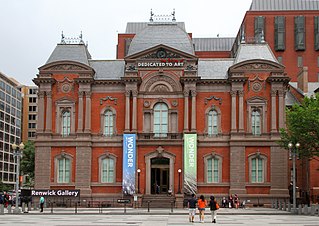
The Renwick Gallery is a branch of the Smithsonian American Art Museum located in Washington, D.C. that displays American craft and decorative arts from the 19th to 21st century. The gallery is housed in a National Historic Landmark building that was opened in 1859 on Pennsylvania Avenue and originally housed the Corcoran Gallery of Art. When it was built in 1859, it was called "the American Louvre", and is now named for its architect James Renwick Jr.
55. United States Capitol
The United States Capitol, often called the Capitol or the Capitol Building, is the seat of the United States Congress, the legislative branch of the federal government. It is located on Capitol Hill at the eastern end of the National Mall in Washington, D.C. Although no longer at the geographic center of the city of Washington, the Capitol forms the origin point for the street-numbering system of the district as well as its four quadrants.
56. John Witherspoon Statue
Doctor John Witherspoon is a bronze sculpture and granite pedestal which depicts John Witherspoon, a Presbyterian minister, member of Congress, and signer of the Declaration of Independence. Born in Scotland, Witherspoon immigrated to the U.S. in the 1760s and later became president of the College of New Jersey. He strongly supported the Thirteen Colonies in their fight to obtain freedom from the United Kingdom of Great Britain and Ireland.
57. Congressional Cemetery
The Congressional Cemetery, officially Washington Parish Burial Ground, is a historic and active cemetery located at 1801 E Street, S.E., in Washington, D.C., on the west bank of the Anacostia River. It is the only American "cemetery of national memory" founded before the Civil War. Over 65,000 individuals are buried or memorialized at the cemetery, including many who helped form the nation and Washington, D.C. in the early 19th century.
58. Homeless Jesus
Homeless Jesus, also known as Jesus the Homeless, is a bronze sculpture by Timothy Schmalz depicting Jesus as a homeless person, sleeping on a park bench. The original sculpture was installed in 2013 at Regis College, a theological college federated with the University of Toronto. Other copies of the statue were installed in several other locations beginning in 2014. As of 2017, over 50 copies were created and placed around the world.
59. Kreeger Museum
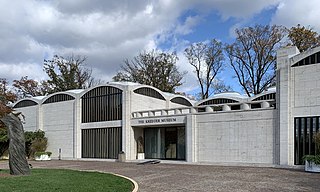
The Kreeger Museum is a modern and contemporary non-profit art museum located in Washington D.C. It is located on Foxhall Road, one of the wealthy residential neighbourhoods of the US capital, in the former home of Carmen and David Lloyd Kreeger, pillars of the Washington D.C. arts and cultural community, and it contains the art collection of nineteenth- and twentieth-century paintings and sculpture they acquired from 1952 to 1988.
60. Farragut Square
Farragut Square is a city square in Washington, D.C.'s Ward 2. It is bordered by K Street NW to the north, I Street NW to the south, on the east and west by segments of 17th Street NW, and interrupts Connecticut Avenue NW. It is the sister park of McPherson Square two blocks east. It is serviced by two stops on the Washington Metro rail system: Farragut North on the Red Line and Farragut West on the Blue, Orange, and Silver Lines.
61. Are Years What? (for Marianne Moore)
Are Years What? is a sculpture by American artist Mark di Suvero. It is in the collection of the Hirshhorn Museum and Sculpture Garden, in Washington, D.C., United States. The sculpture is named after poet Marianne Moore's "What Are Years". From May 22, 2013 through May 26, 2014, the sculpture resided temporarily in San Francisco, as part of the San Francisco Museum of Modern Art's Mark di Suvero exhibition at Crissy Field.
62. Frances Perkins House
The Frances Perkins House is a historic house at 2326 California Street NW in Washington, D.C. Built in 1914, it was from 1937 to 1940 the home of Frances Perkins (1880-1965), the first woman to serve in the United States Cabinet. Perkins was the Secretary of Labor under president Franklin Delano Roosevelt, and was a major force in advancing his New Deal agenda. This house was declared a National Historic Landmark in 1991.
63. The Liberator Simon Bolivar Memorial
An equestrian statue of Venezuelan military and political leader Simón Bolívar by the American artist Felix de Weldon is located in Washington, D.C., at Virginia Avenue NW, 18th Street NW, and C Street NW, near the United States Department of Interior and the Pan American Union Building of the Organization of American States. It was surveyed as part of the Smithsonian Institution's Save Outdoor Sculpture! survey in 1993.
64. Connecticut Avenue Northwest
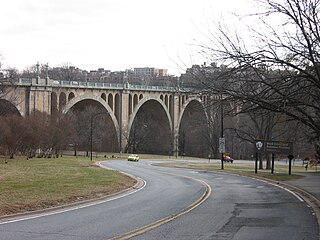
The Taft Bridge is a historic bridge located in the Northwest quadrant of Washington, D.C. It carries Connecticut Avenue over the Rock Creek gorge, including Rock Creek and the Rock Creek and Potomac Parkway, connecting the neighborhoods of Woodley Park and Kalorama. It is named after former United States president and Supreme Court Chief Justice William Howard Taft, and sits to the southwest of the Duke Ellington Bridge.
65. Abraham Lincoln
Abraham Lincoln (1920) is a colossal seated figure of the 16th president of the United States, Abraham Lincoln (1809–1865), sculpted by Daniel Chester French (1850–1931) and carved by the Piccirilli Brothers. Located in the Lincoln Memorial, on the National Mall, Washington, D.C., United States, the statue was unveiled in 1922. The work follows in the Beaux Arts and American Renaissance style traditions.
66. Slowe-Burrill House
The Slowe-Burrill House is a Queen Anne-style house in the Brookland neighborhood of Washington, D.C. Built in 1890, the home was occupied from 1922 to 1937 by Lucy Slowe and Mary Burrill, notable African American educators who are thought by historians to have been a couple. The house was listed on the National Register of Historic Places in 2020 for its significance to African American and LGBT history.
67. Mohandas K. Gandhi Statue
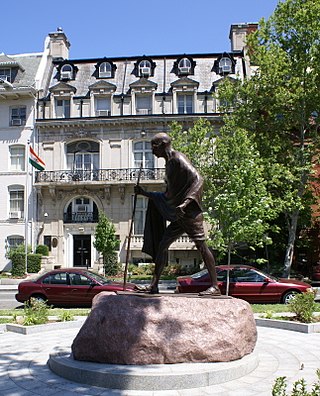
The Mahatma Gandhi Memorial is a public statue of Mahatma Gandhi, installed on a triangular island along Massachusetts Avenue, in front of the Embassy of India, Washington, D.C., in the United States. A gift from the Indian Council for Cultural Relations, it was dedicated on September 16, 2000 during a state visit of Indian Prime Minister Atal Bihari Vajpayee in the presence of US President Bill Clinton.
68. Union Station Plaza
Columbus Circle, also known as Union Station Plaza or Columbus Plaza, is a traffic circle at the intersection of Delaware, Louisiana and Massachusetts Avenues and E and First Streets, Northeast in Washington, D.C. It is located in front of Union Station right next to the grounds of the United States Capitol. Union Station and its access roads interrupt this circle on one side, forming an arc.
69. Bishop John Carroll
Bishop John Carroll is a statue by the sculptor Jerome Connor commemorating Archbishop John Carroll, the founder of Georgetown University and the first Catholic bishop in the United States. Located in front of Healy Hall, on university's campus in the Georgetown neighborhood of Washington, D.C., the statue consists of a bronze sculpture of Carroll on top of a granite pedestal.
70. Andrew Jackson
Andrew Jackson is a bronze equestrian statue by Clark Mills mounted on a white marble base in the center of Lafayette Square within President's Park in Washington, D.C., just to the north of the White House. Jackson is depicted dressed in military uniform, raising his hat with his right hand, while controlling the reins with his left hand as his horse rises on its rear legs.
Wikipedia: Equestrian statue of Andrew Jackson (Washington, D.C.) (EN)
71. James Jackson
James Jackson was an early British-born Georgia politician of the Democratic-Republican Party. He was a member of the U.S. House of Representatives from 1789 until 1791. He was also a U.S. Senator from Georgia from 1793 to 1795, and from 1801 until his death in 1806. In 1797 he was elected 23rd Governor of Georgia, serving from 1798 to 1801 before returning to the senate.
72. McPherson Square
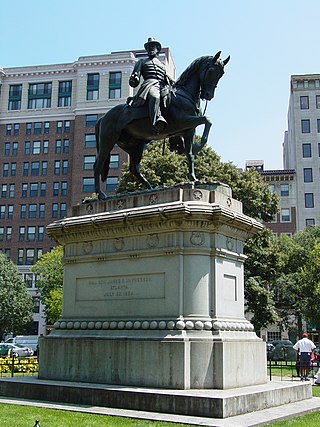
McPherson Square is a square in downtown Washington, D.C. It is bound by K Street Northwest to the north, Vermont Avenue NW on the East, I Street NW on the south, and 15th Street NW on the West; it is one block northeast of Lafayette Park. It is the sister square of Farragut Square two blocks west. and is served by the McPherson Square station of the Washington Metro.
73. Clamdigger
Clamdigger is a bronze sculpture by Willem de Kooning. It may have been inspired by "the men who dug for clams along the beaches" near his home in East Hampton, New York. It has been described as one of his "extraordinarily tactile figurative sculptures" that "seemed pulled from the primordial ooze," and "as part man, part creature of the mud and the shallows."
74. Franklin Square
Franklin Square, or Franklin Park, is a square in downtown Washington, D.C. Purportedly named after Benjamin Franklin, it is bounded by K Street NW to the north, 13th Street NW on the east, I Street NW on the south, and 14th Street NW on the west. It is served by the McPherson Square station of the Washington Metro, which is located just southwest of the park.
75. Decatur House
Decatur House is a historic house museum at 748 Jackson Place in Washington, D.C., the capital of the United States. It is named after its first owner and occupant, the naval officer Stephen Decatur. The house is located at the northwest corner of Lafayette Square, at the southwest corner of Jackson Place and H Street, about a block from the White House.
76. Connecticut Avenue Northwest
The Klingle Valley Bridge, officially known as the Connecticut Avenue Bridge, is an Art Deco steel-arch bridge located near the National Zoological Park on Connecticut Avenue, Northwest in Washington, D.C. The bridge crosses Klingle Valley, running from Macomb Street to Devonshire Place and connecting the Cleveland Park and Woodley Park neighborhoods.
77. Canova Lions
The Canova Lions, located in front of the Corcoran Gallery of Art in Washington, D.C., are copies of a pair of lions sculpted by Antonio Canova in 1792 for the tomb of Pope Clement XIII in St Peter's in Rome. The originals were sculpted from marble; these were cast in bronze from molds of the originals. The pieces were installed in 1860.
78. President Lincoln's Cottage
President Lincoln and Soldiers' Home National Monument, sometimes shortened to President Lincoln's Cottage, is a national monument on the grounds of the Soldiers' Home, known today as the Armed Forces Retirement Home. It is located near Brookland in Washington, D.C. President Lincoln's Cottage was formerly known as Anderson Cottage.
Wikipedia: President Lincoln's Cottage at the Soldiers' Home (EN), Website
79. Arthur M. Sackler Gallery
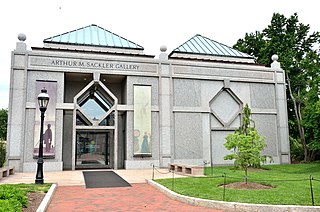
The Arthur M. Sackler Gallery is an art museum of the Smithsonian Institution in Washington, D.C., focusing on Asian art. The Sackler Gallery and the Freer Gallery of Art together form the National Museum of Asian Art in the United States. The Freer and Sackler galleries house the largest Asian art research library in the country.
80. Joseph Nicollet
Joseph Nicolas Nicollet, also known as Jean-Nicolas Nicollet, was a French geographer, astronomer, and mathematician known for mapping the Upper Mississippi River basin during the 1830s. Nicollet led three expeditions in the region between the Mississippi and Missouri Rivers, primarily in Minnesota, South Dakota, and North Dakota.
81. Chesapeake and Ohio Canal Monument
The Chesapeake and Ohio Canal commemorative obelisk is an 8-foot (2.4 m) marble obelisk erected in 1850 in Washington, D.C., to mark the completion of the Chesapeake and Ohio Canal to Cumberland, Maryland. It stands on the northwest corner of the Wisconsin Avenue Bridge over the canal in Washington's Georgetown neighborhood.
Wikipedia: Chesapeake and Ohio Canal commemorative obelisk (EN)
82. United Brick Corporation Brick Company
The United Brick Corporation Brick Complex, also known as the New York Avenue Brickworks, is a historic industrial site. It is located on the 2800 block of New York Avenue, NE in Washington, D.C. on the grounds of the United States National Arboretum. The site sits on federal land, and access by the public is restricted.
83. For Gordon Bunshaft
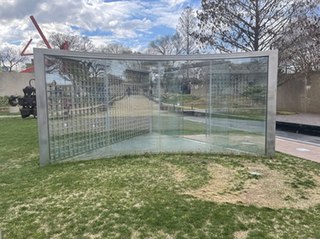
For Gordon Bunshaft is a 2006 sculpture by Dan Graham, installed at the Hirshhorn Museum and Sculpture Garden in Washington, D.C., United States. The work, which refers to American architect Gordon Bunshaft, was installed by the reflection pool of the Bunshaft-designed sculpture garden at the Hirshhorn on May 30, 2008.
84. Mary McLeod Bethune Council House
The Mary McLeod Bethune Council House National Historic Site preserves the house of Mary McLeod Bethune, located in Northwest Washington, D.C., at 1318 Vermont Avenue NW. National Park Service rangers offer tours of the home, and a video about Bethune's life is shown. It is part of the Logan Circle Historic District.
Wikipedia: Mary McLeod Bethune Council House National Historic Site (EN)
85. Brushstroke
Brushstroke is a sculpture by Roy Lichtenstein. There are two copies. The original was created in 2001 for the Museo Nacional Centro de Arte Reina Sofía in Madrid, Spain. The second was delivered to the Hirshhorn Museum and Sculpture Garden in Washington, DC, on September 16, 2003, and dedicated on October 25, 2003.
86. (Here I Stand) In the Spirit of Paul Robeson
-In-the-Spirit-of-Paul-Robeson.jpg)
(Here I Stand) in the Spirit of Paul Robeson is a public artwork by American artist Allen Uzikee Nelson, located at the intersection of Kansas Ave NW, Georgia Ave NW and Varnum St NW in the Petworth neighborhood in Washington, D.C., United States. It is a tribute to musician, actor, and social activist Paul Robeson.
Wikipedia: (Here I Stand) In the Spirit of Paul Robeson (EN)
87. An Entrance to the Paris Métropolitain
An Entrance to the Paris Métropolitain is a sculpture by Hector Guimard, conceived in 1902 and fabricated between 1902 and 1913. Guimard designed 141 entrances to the Paris Métro of varying types, 86 of which are still standing. One is featured at the National Gallery of Art Sculpture Garden in Washington, D.C.
88. The Phillips Collection
The Phillips Collection is an art museum founded by Duncan Phillips and Marjorie Acker Phillips in 1921 as the Phillips Memorial Gallery located in the Dupont Circle neighborhood of Washington, D.C. Phillips was the grandson of James H. Laughlin, a banker and co-founder of the Jones and Laughlin Steel Company.
89. Belmont-Paul Women's Equality National Monument
The Belmont–Paul Women's Equality National Monument is a historic house and museum of the U.S. women's suffrage and equal rights movements located in the Capitol Hill neighborhood of Washington, D.C. The monument is named after suffragists and National Woman's Party leaders Alva Belmont and Alice Paul.
Wikipedia: Belmont-Paul Women's Equality National Monument (EN), Website
90. American Legion Freedom Bell
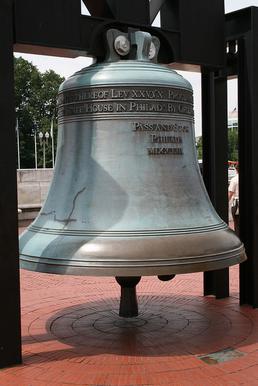
Freedom Bell, American Legion, is a public artwork located at Union Station in Washington, D.C., United States. A replica of the Liberty Bell, Freedom Bell, American Legion was surveyed as part of the Smithsonian's American Art Museum's Inventories of American Painting and Sculpture database in 1985.
91. United States National Arboretum
The United States National Arboretum is an arboretum in northeast Washington, D.C., operated by the United States Department of Agriculture's Agricultural Research Service. It was established in 1927 by an act of Congress after a campaign by USDA Chief Botanist Frederick Vernon Coville.
92. John Gould Stephenson
John Gould Stephenson was an American physician and soldier. He was the fifth Librarian of the United States Congress from 1861 to 1864. He was referred to as the "librarian of the Civil War era" because Stephenson's tenure of librarianship covered almost the entire length of the war.
93. National Capitol Columns
The National Capitol Columns are a monument in Washington, D.C.'s National Arboretum. It is an arrangement of twenty-two Corinthian columns which were a part of the United States Capitol from 1828 to 1958, placed amid 20 acres (8.1 ha) of open meadow, known as the Ellipse Meadow.
94. Holly Court
Holly Court, also known as the Ficklen-Lyndon-Johnson House, and now operated as Holly Court Inn Bed & Breakfast, is a historic Neoclassical architecture residence converted into a bed & breakfast in Washington, Georgia. It was added to the National Register of Historic Places.
95. Anna Thornton
Anna Maria Brodeau Thornton (1775?–1865) was a prominent Washington, D.C., socialite, diarist, and the wife of architect William Thornton, who designed the first United States Capitol building. She rubbed shoulders with figures such as George Washington and Dolley Madison.
96. Carter G. Woodson Home National Historic Site
Carter G. Woodson Home National Historic Site at 1538 9th Street NW, in the Shaw neighborhood of Washington, D.C., preserves the home of Carter G. Woodson (1875–1950). Woodson, the founder of Black History Month, was an African-American historian, author, and journalist.
Wikipedia: Carter G. Woodson Home National Historic Site (EN)
97. Franklin Delano Roosevelt Memorial
The Franklin Delano Roosevelt Memorial is a presidential memorial in Washington D.C., dedicated to the memory of Franklin Delano Roosevelt, the 32nd president of the United States, and to the era he represents. The memorial is one of two in Washington honoring Roosevelt.
98. Archibald Henderson
Archibald Henderson was the longest-serving Commandant of the Marine Corps, serving from 1820 to 1859. His name is learned by all recruits at Marine recruit training as the "Grand old man of the Marine Corps," serving in the United States Marine Corps for over 52 years.
99. Elbridge Gerry
Elbridge Gerry was an American Founding Father, merchant, politician, and diplomat who served as the fifth vice president of the United States under President James Madison from 1813 until his death in 1814. The political practice of gerrymandering is named after him.
100. DAR Museum
The DAR Museum, run by the Daughters of the American Revolution, is an art and history museum in Washington, D.C. The museum is located in Memorial Continental Hall, just down the street from DAR Constitution Hall, where some of the museum's concerts take place.
Share
Disclaimer Please be aware of your surroundings and do not enter private property. We are not liable for any damages that occur during the tours.
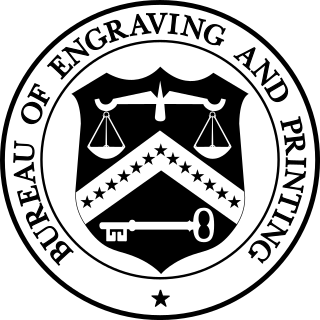
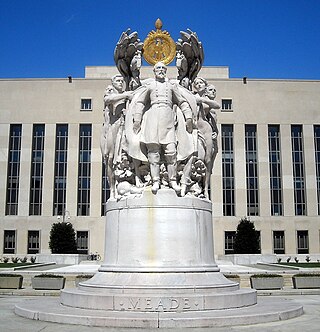
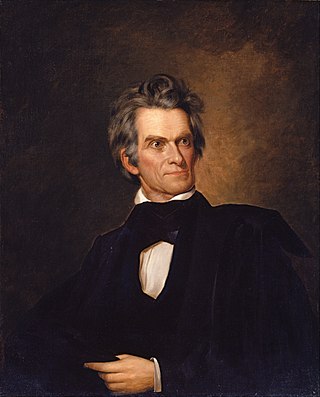
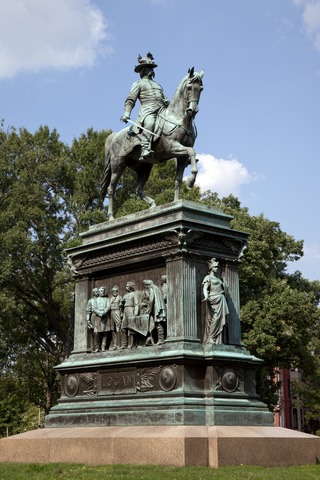
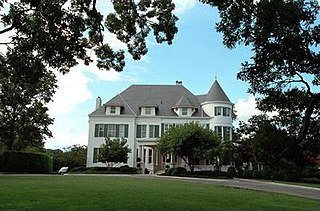
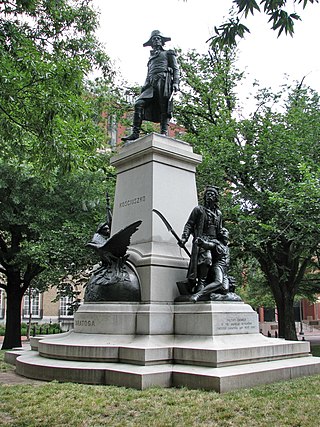
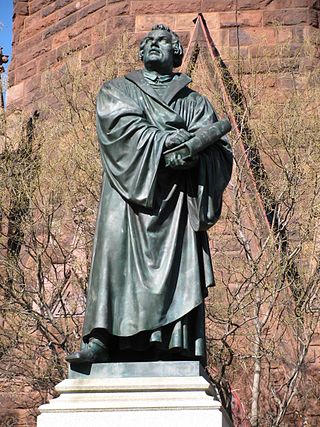
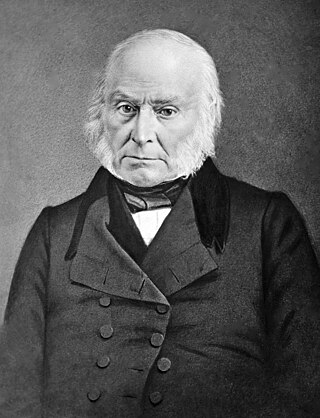
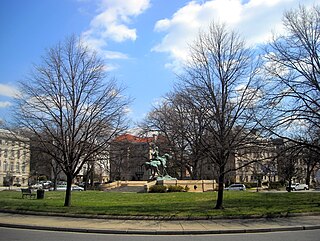
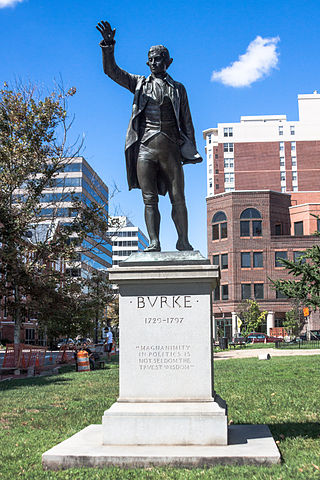
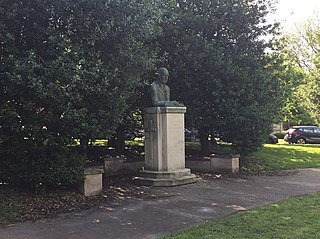
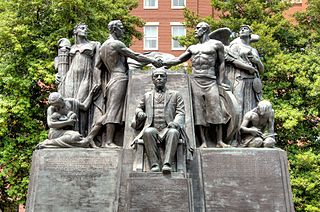
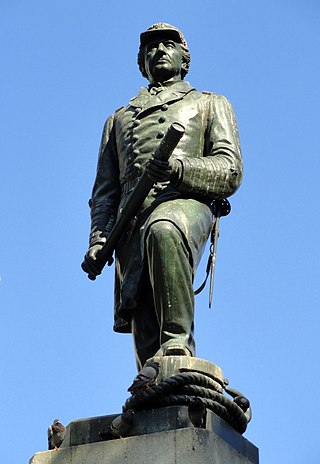
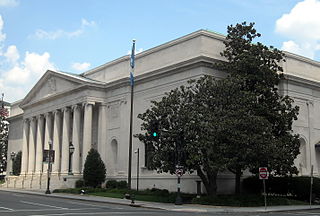
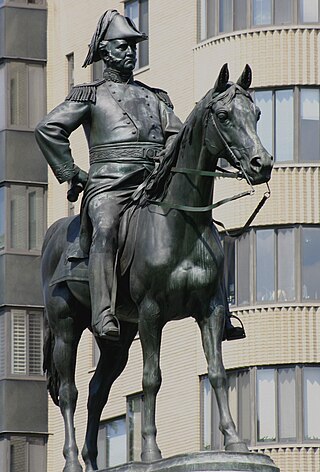
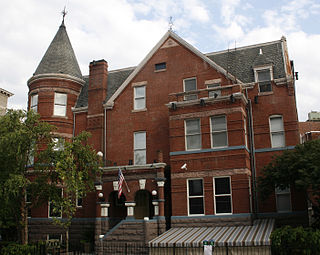
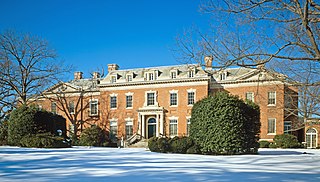
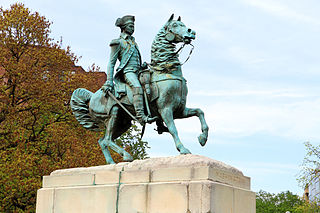
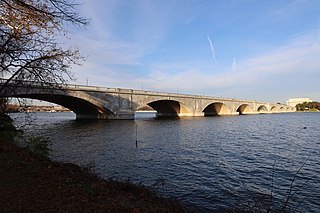
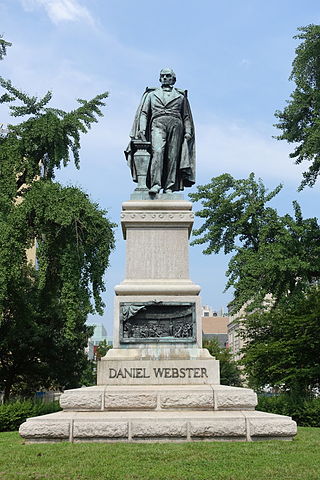
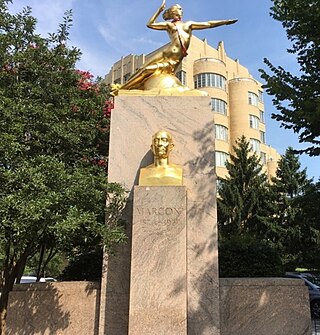
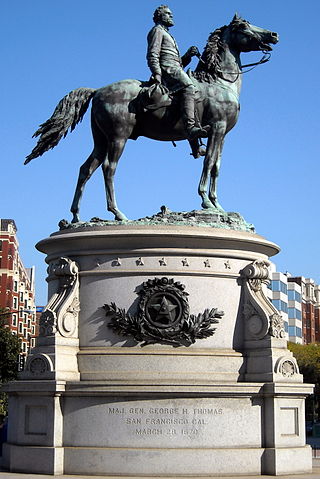
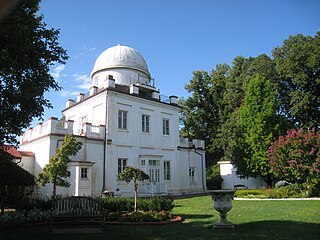
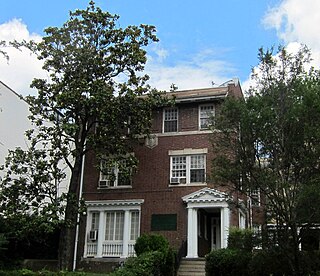
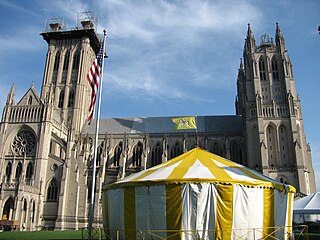
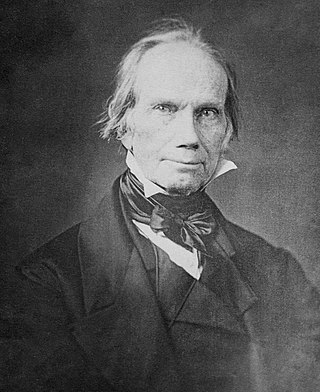
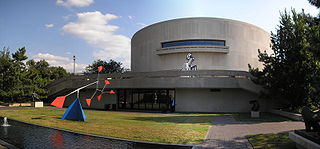
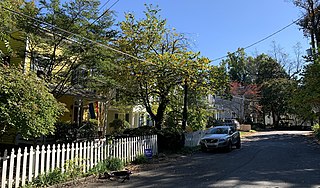
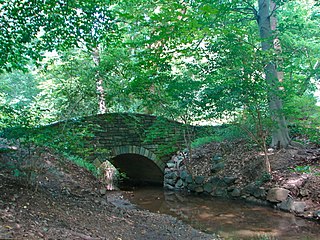
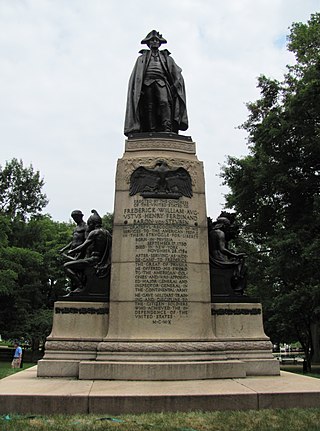
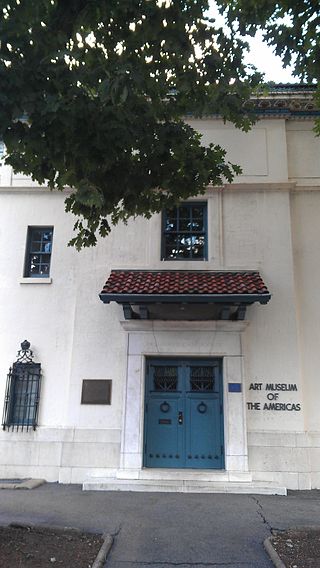
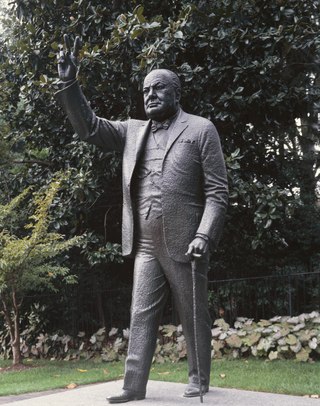
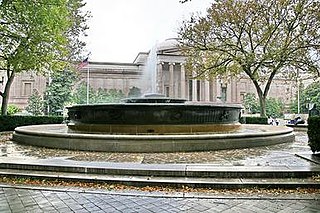
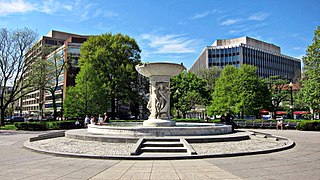
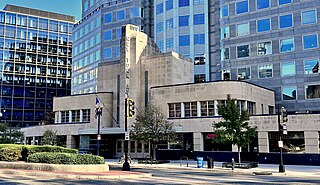
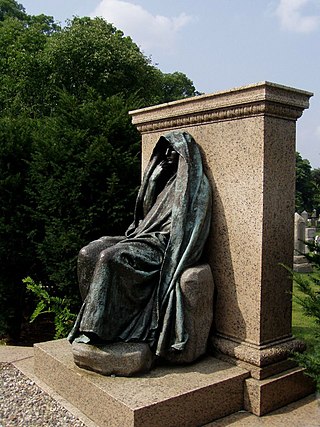
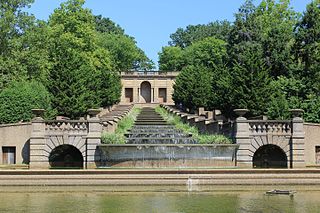
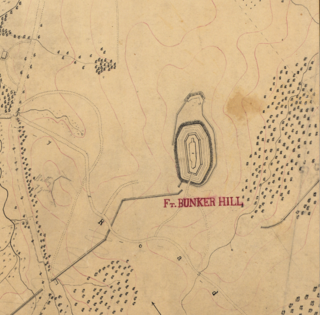
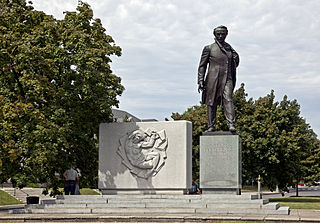
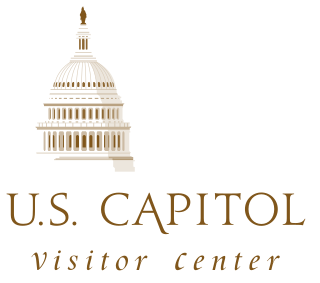
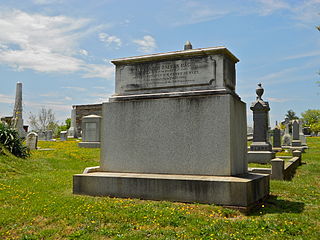
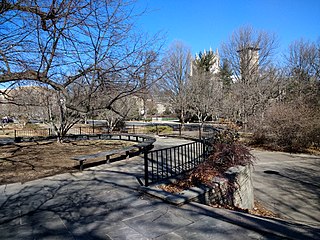
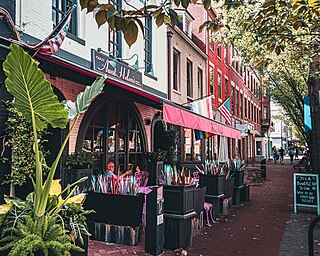
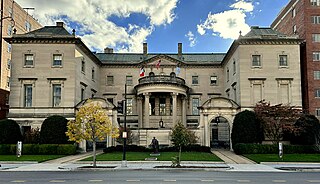
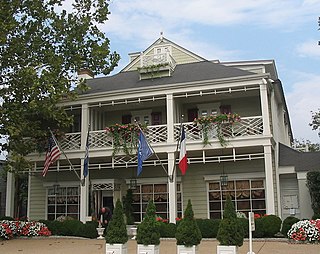
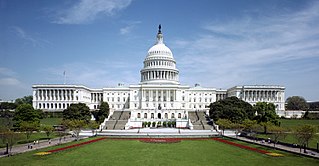
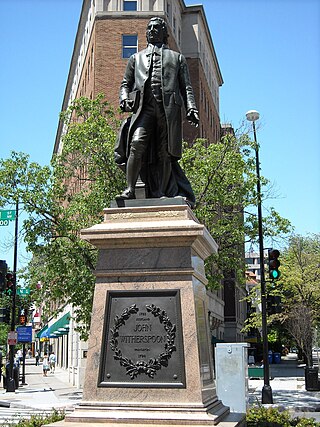
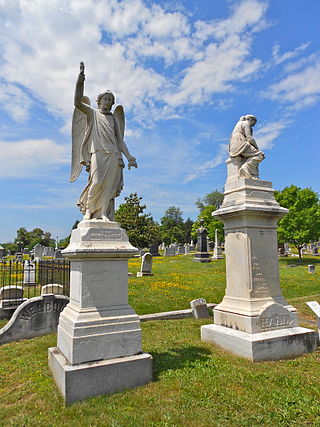
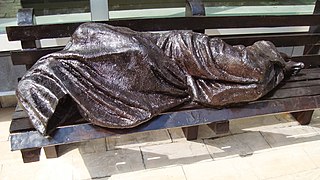
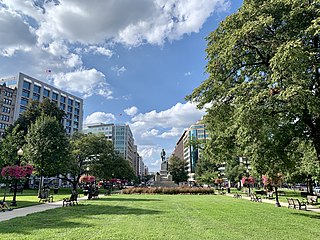
.jpg)
